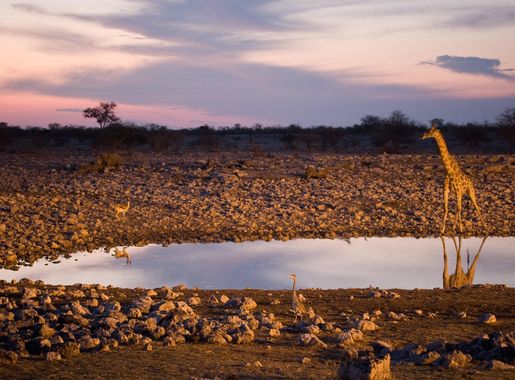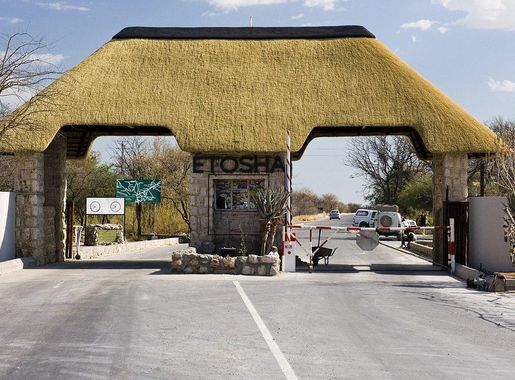
The Wildlife Haven: Etosha National Park
Explore Etosha National Park: Namibia's premier safari destination, renowned for its vast salt pan, diverse wildlife, and unforgettable safari experiences.
Etosha National Park, located in northern Namibia, is a premier safari destination famed for its abundant wildlife and breathtaking landscapes. This vast park covers over 22,000 square kilometers, making it one of the largest national parks in Africa. The name 'Etosha' means 'Great White Place,' referring to the massive salt pan that can be seen from space. This salt pan, an ancient lakebed, is a striking feature of the park and transforms into a shimmering mirage under the sun. The park is home to a wide variety of wildlife, including elephants, lions, leopards, rhinos, and a plethora of bird species. Visitors can embark on self-drive safaris or join guided tours to explore the park's diverse ecosystems. Waterholes scattered throughout Etosha are key spots for wildlife viewing, especially during the dry season when animals congregate for water. These waterholes provide unique opportunities to observe different species interacting in their natural habitat. Etosha National Park also offers several camps and lodges where tourists can stay. Each camp is equipped with amenities such as restaurants, shops, and fuel stations, ensuring a comfortable and convenient visit. The park's well-maintained road network makes it accessible for all types of travelers, from seasoned safari-goers to first-time visitors. With its stunning scenery and rich biodiversity, Etosha is a must-visit destination for nature enthusiasts and adventure seekers alike.
Local tips in Etosha National Park
- Visit during the dry season (May to October) for the best wildlife viewing at waterholes.
- Bring binoculars and a camera with a good zoom lens for capturing distant wildlife.
- Stay at the park's campsites or lodges to maximize your time for wildlife spotting.
- Follow park rules and guidelines to ensure your safety and the protection of the wildlife.
- Carry plenty of water, sunscreen, and a hat to protect yourself from the harsh sun.
- Book guided tours for expert insights and a better chance to spot elusive animals.
The Wildlife Haven: Etosha National Park
Etosha National Park, located in northern Namibia, is a premier safari destination famed for its abundant wildlife and breathtaking landscapes. This vast park covers over 22,000 square kilometers, making it one of the largest national parks in Africa. The name 'Etosha' means 'Great White Place,' referring to the massive salt pan that can be seen from space. This salt pan, an ancient lakebed, is a striking feature of the park and transforms into a shimmering mirage under the sun. The park is home to a wide variety of wildlife, including elephants, lions, leopards, rhinos, and a plethora of bird species. Visitors can embark on self-drive safaris or join guided tours to explore the park's diverse ecosystems. Waterholes scattered throughout Etosha are key spots for wildlife viewing, especially during the dry season when animals congregate for water. These waterholes provide unique opportunities to observe different species interacting in their natural habitat. Etosha National Park also offers several camps and lodges where tourists can stay. Each camp is equipped with amenities such as restaurants, shops, and fuel stations, ensuring a comfortable and convenient visit. The park's well-maintained road network makes it accessible for all types of travelers, from seasoned safari-goers to first-time visitors. With its stunning scenery and rich biodiversity, Etosha is a must-visit destination for nature enthusiasts and adventure seekers alike.
When is the best time to go to Etosha National Park?
Iconic landmarks you can’t miss
Namib-Naukluft National Park
Explore the breathtaking landscapes and unique wildlife of Namib-Naukluft National Park, a true gem of Namibia's natural heritage.
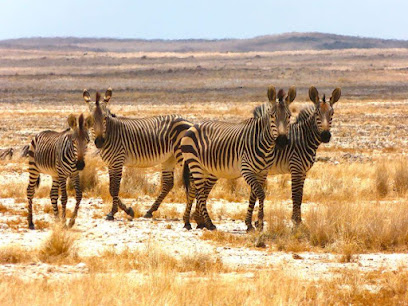
Etosha Safari Camp, Gondwana Collection Namibia
Experience the thrill of wildlife encounters and rustic luxury at Etosha Safari Camp, your gateway to Namibia's breathtaking natural wonders.
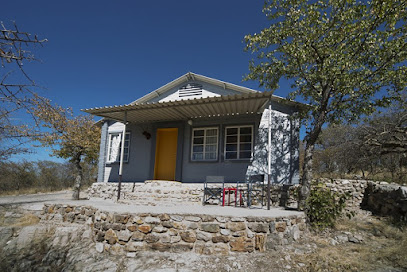
Okaukuejo Etosha
Experience the wildlife wonderland at Okaukuejo, the gateway to Etosha National Park, where nature and luxury meet in breathtaking harmony.
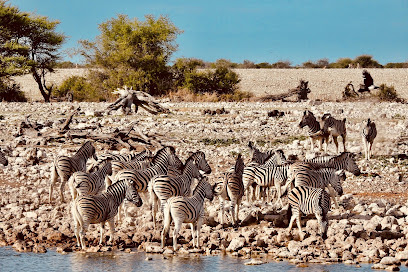
Okapuka Safari Lodge
Discover the allure of Namibia at Okapuka Safari Lodge, where nature meets luxury and adventure awaits in every corner.

Etosha Safari Lodge, Gondwana Collection Namibia
Discover the thrill of wildlife at Etosha Safari Lodge, your luxurious gateway to Namibia's iconic Etosha National Park.
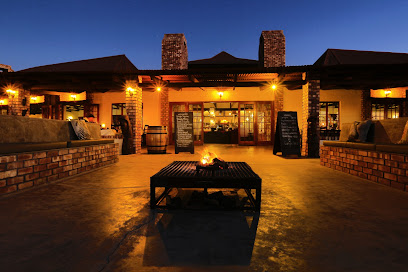
Etosha Village
Discover wildlife wonders and comfort at Etosha Village, your perfect base for exploring Namibia's iconic Etosha National Park.
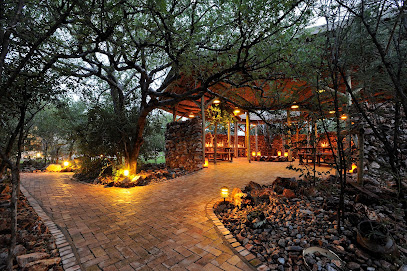
Mokuti Etosha
Experience luxury and adventure at Mokuti Etosha, the premier lodge near Etosha National Park, where nature meets comfort in Namibia.
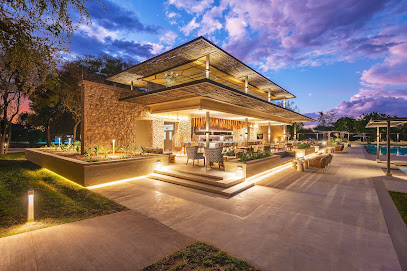
Toshari Lodge
Experience the beauty of Namibia at Toshari Lodge, the perfect base for exploring the majestic Etosha National Park and its rich wildlife.

Okonjima Nature Reserve
Explore the breathtaking Okonjima Nature Reserve, a sanctuary for wildlife enthusiasts and a hub for conservation in the heart of Namibia.
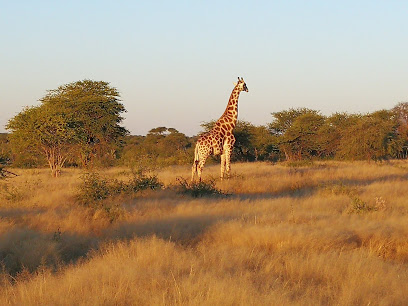
Bwabwata-National Park
Experience the breathtaking landscapes and diverse wildlife of Bwabwata National Park, a hidden gem in Namibia's natural heritage.
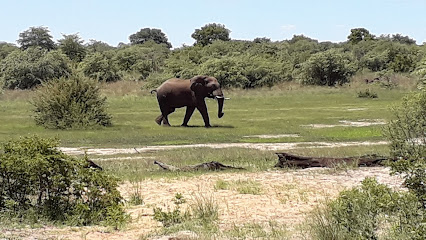
Mount Etjo Safari Lodge
Discover the beauty of Namibia at Mount Etjo Safari Lodge, your gateway to unforgettable wildlife adventures and serene landscapes.

Waterberg Plateau National Park
Discover the stunning landscapes and rich wildlife of Waterberg Plateau National Park, Namibia's natural treasure for adventure seekers and nature lovers.
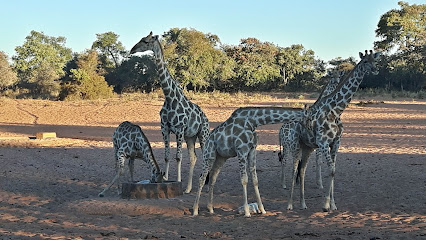
Otjiwa Safari Lodge
Discover the beauty of Namibia at Otjiwa Safari Lodge, where luxury meets the wild in an unforgettable safari experience.

Halali Camp
Experience the tranquility and wildlife wonders of Halali Camp in Etosha National Park, a perfect retreat for nature lovers and adventure seekers.
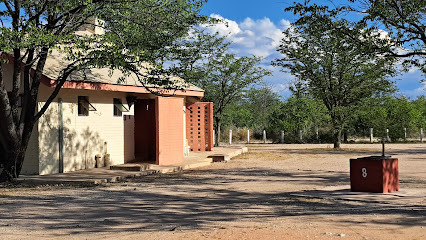
Daan Viljoen Game Reserve
Explore the natural beauty and diverse wildlife of Daan Viljoen Game Reserve, a captivating national park near Windhoek, Namibia.

Unmissable attractions to see
Okaukuejo Etosha
Experience the majestic wildlife and breathtaking landscapes at Okaukuejo, a jewel of Etosha National Park, ideal for nature lovers and adventurers.
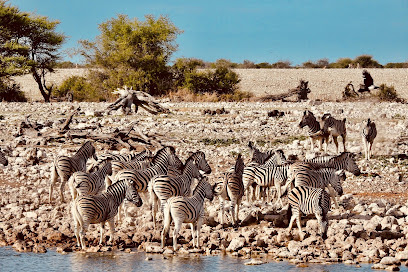
Moringa Waterhole Viewpoint
Experience the breathtaking wildlife and stunning views at Moringa Waterhole Viewpoint in Namibia's national park, a nature lover's paradise.
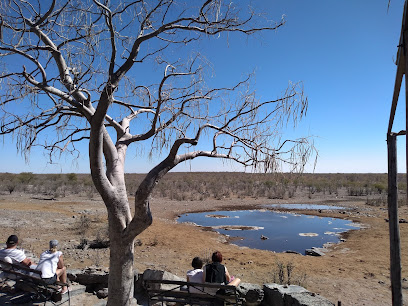
Chudop Waterhole
Explore the captivating Chudop Waterhole in Etosha National Park, a wildlife haven that offers stunning views and unforgettable wildlife encounters in Namibia.
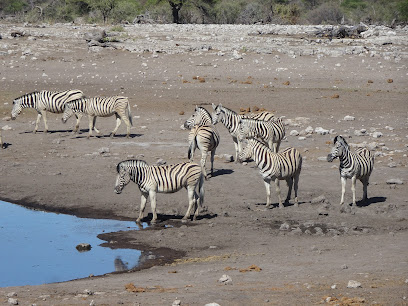
Anderson Gate Etosha National Park (Southern Entrance)
Experience the breathtaking wildlife and stunning landscapes at Anderson Gate, your entry into the majestic Etosha National Park.
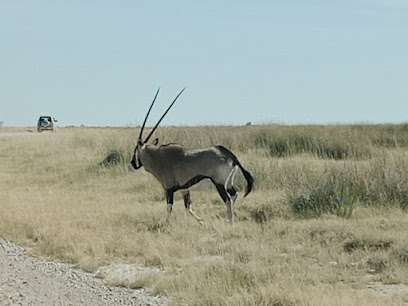
Tsumcor
Explore the stunning landscapes and rich wildlife of Tsumcor, a captivating tourist attraction in Namutoni, Namibia, near the Etosha National Park.
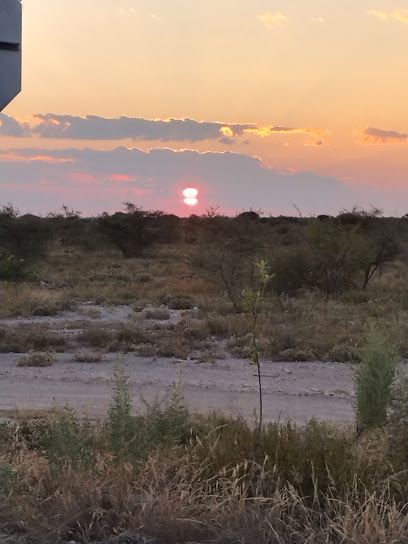
Fort Namutoni
Discover the historic Fort Namutoni, a captivating landmark in Namibia with stunning views and rich cultural significance.
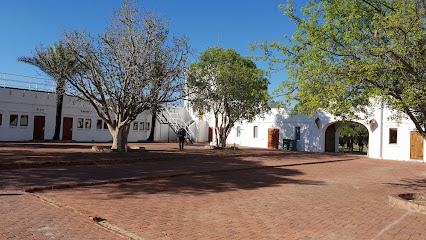
Omapaha Etosha Himba Village
Explore the rich traditions and vibrant landscapes of the Himba people at Omapaha Etosha Himba Village, a unique cultural experience in Namibia.
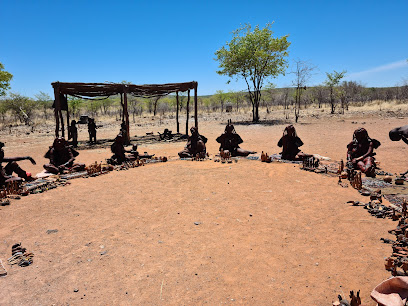
Gemsbokvlakte
Experience the stunning wildlife and breathtaking views at Gemsbokvlakte in Etosha National Park, a premier observation deck in Namibia.
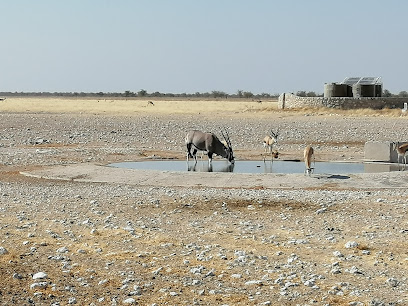
Okondeka (natural waterhole)
Discover the breathtaking wildlife and serene landscapes at Okondeka Natural Waterhole in Etosha National Park, a must-see for every nature lover.
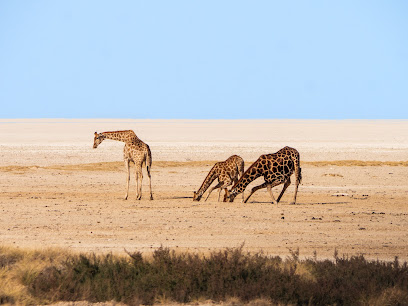
Picnic Spot
Discover the tranquility of the Picnic Spot, a perfect location for picnics and relaxation amidst stunning natural beauty.
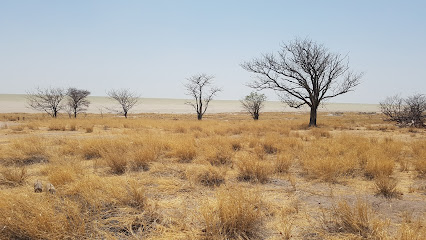
Rietfontein
Experience the breathtaking wildlife and stunning landscapes at Rietfontein, an observation deck in Etosha National Park, Namibia.
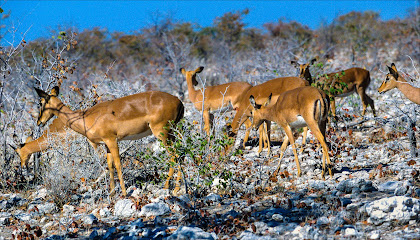
Koinachas
Explore the captivating landscapes and rich wildlife of Koinachas, a must-visit tourist attraction in Namutoni, Namibia.
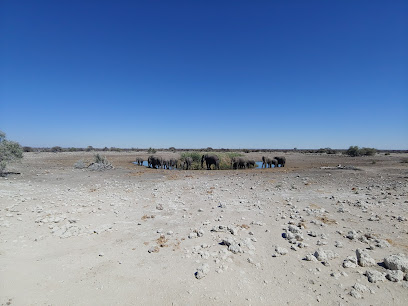
Nuamses Waterhole
Experience the tranquility and wildlife wonders at Nuamses Waterhole in Halali, a must-visit natural oasis in Namibia's unique landscape.

King Nehale Waterhole
Experience the breathtaking wildlife and serene beauty at King Nehale Waterhole in Namibia's iconic Etosha National Park.
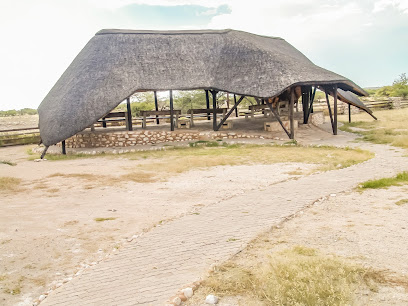
Sueda
Experience stunning panoramic views of Namibia's landscapes at Sueda, the perfect observation deck for nature lovers and photographers.
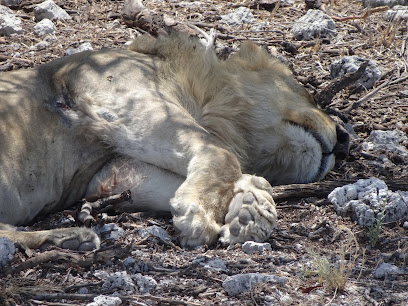
Essential places to dine
Joe's Beerhouse
Discover the vibrant atmosphere and authentic flavors at Joe's Beerhouse in Windhoek - A must-visit for every traveler seeking local culinary delights.
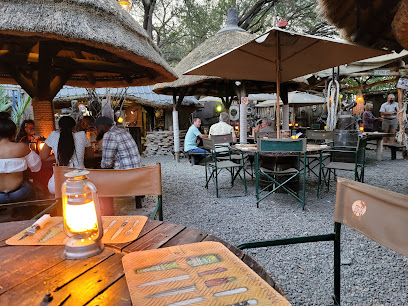
Etosha National Park
Explore Etosha National Park: A Wildlife Haven with Stunning Landscapes and Diverse Fauna Awaiting Your Discovery.

The Tug Restaurant
Experience exquisite Namibian cuisine at The Tug Restaurant in Swakopmund with stunning ocean views and a delightful menu.

The Stellenbosch Wine Bar and Bistro
Savor exquisite Namibian cuisine paired with exceptional wines at The Stellenbosch Wine Bar and Bistro in Windhoek.
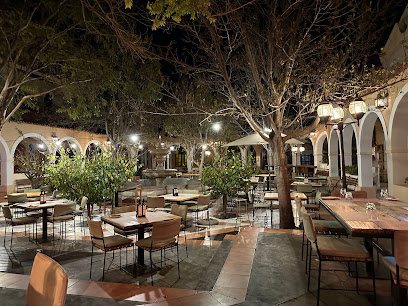
Canyon Roadhouse, Gondwana Collection Namibia
Experience comfort and local cuisine at Canyon Roadhouse, your perfect stopover while exploring Namibia's breathtaking landscapes.
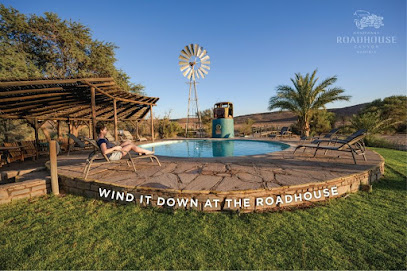
Roof of Africa Restaurant
Discover authentic Namibian flavors at the Roof of Africa Restaurant in Windhoek - where taste meets tradition.
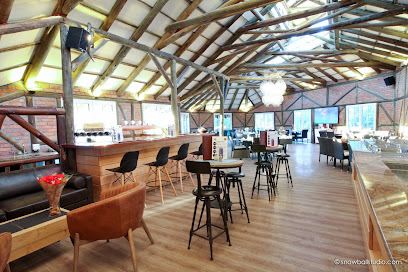
Etosha Safari Camp, Gondwana Collection Namibia
Experience unparalleled wildlife adventures at Etosha Safari Camp while immersing yourself in Namibia's breathtaking landscapes.
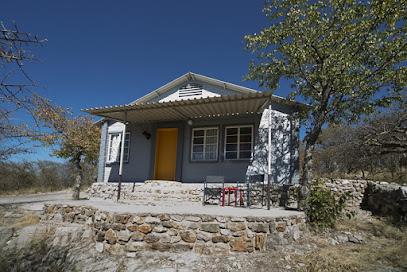
Kubata Restaurant
Savor authentic Namibian cuisine at Kubata Restaurant in Windhoek – where tradition meets modern dining in a vibrant setting.
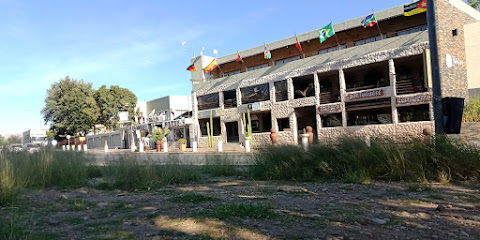
Etosha Safari Lodge, Gondwana Collection Namibia
Experience unparalleled wildlife adventures at Etosha Safari Lodge, your gateway to Namibia's stunning landscapes and vibrant ecosystems.
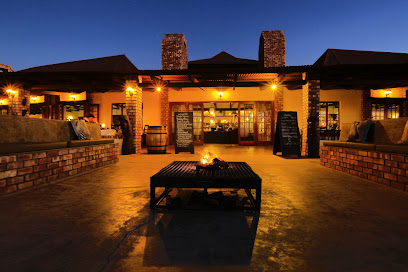
Etosha Village
Experience the beauty and tranquility of Etosha Village - your gateway to exploring Namibia's stunning wildlife and landscapes.
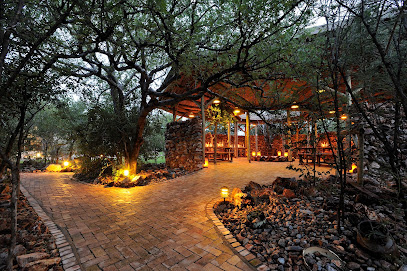
Mokuti Etosha
Discover luxury and adventure at Mokuti Etosha Lodge - your gateway to exploring Namibia's majestic wildlife in Etosha National Park.
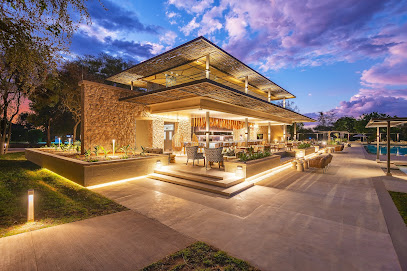
Toshari Lodge
Experience serene luxury at Toshari Lodge near Etosha National Park—your gateway to Namibia's breathtaking landscapes and diverse wildlife.

Halali Camp
Discover tranquility at Halali Camp in Etosha National Park – your gateway to Namibia’s stunning wildlife and landscapes.
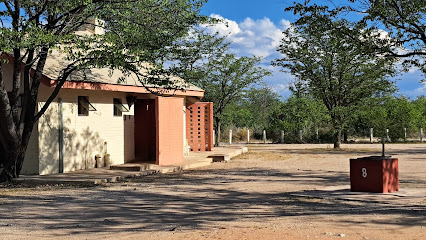
Pepata Restaurant
Experience the rich flavors of Namibia at Pepata Restaurant in Windhoek – where culinary delights meet local culture.
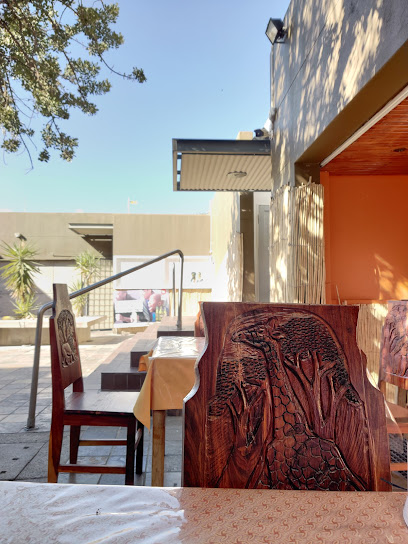
Etosha King Nehale, Gondwana Collection Namibia
Discover unparalleled luxury and breathtaking wildlife experiences at Etosha King Nehale in Namibia's stunning landscapes.

Markets, malls and hidden boutiques
Etosha National Park
Experience the majestic wildlife and stunning landscapes of Etosha National Park, a premier destination for safari adventures in Namibia.
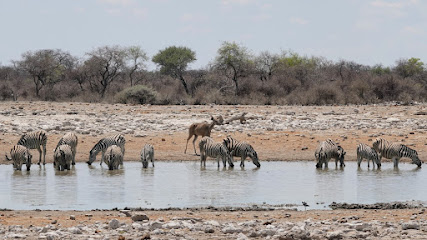
Etosha Safari Camp, Gondwana Collection Namibia
Discover the thrill of wildlife adventures at Etosha Safari Camp, your gateway to Namibia's stunning Etosha National Park.
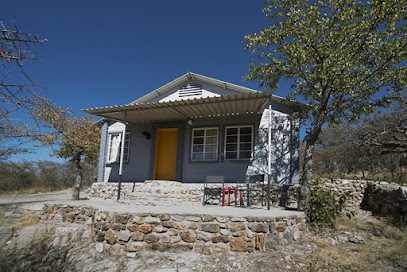
Namibia Craft Centre
Explore the vibrant Namibia Craft Centre in Windhoek, where authentic African art and crafts come alive, showcasing the best of local craftsmanship.
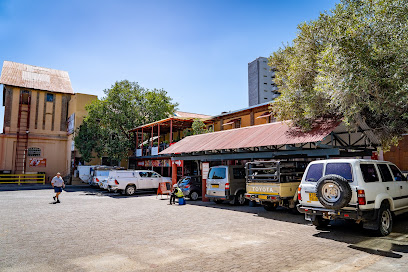
Okaukuejo Etosha
Experience the wildlife wonder at Okaukuejo in Etosha National Park, where breathtaking views and vibrant nature await every traveler.
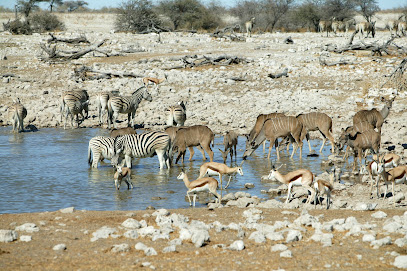
Etosha Safari Lodge, Gondwana Collection Namibia
Experience the magic of Namibia at Etosha Safari Lodge, where comfort meets adventure in the heart of nature's bounty.
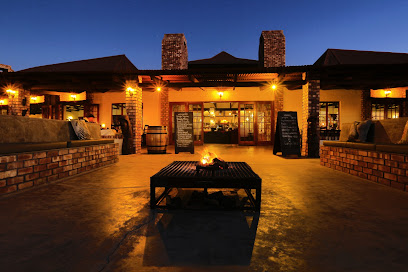
Etosha Village
Experience the enchanting Etosha Village, a serene lodge near Etosha National Park, perfect for wildlife exploration and relaxation.

Mokuti Etosha
Discover the tranquility and adventure at Mokuti Etosha Lodge, your gateway to the magnificent Etosha National Park in Namibia.
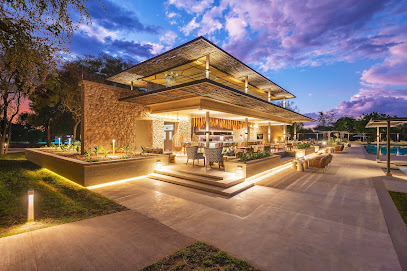
Halali Camp
Experience the beauty of Halali Camp in Etosha National Park, where nature meets comfort, creating unforgettable adventures in the heart of Namibia.
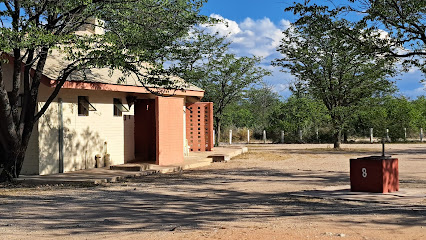
Mushara Lodge
Discover a serene escape at Mushara Lodge, your gateway to the wonders of Etosha National Park and Namibia's enchanting wildlife.

Moringa Waterhole Viewpoint
Explore the breathtaking Moringa Waterhole Viewpoint, where wildlife encounters and stunning vistas await you in Namibia's national park.
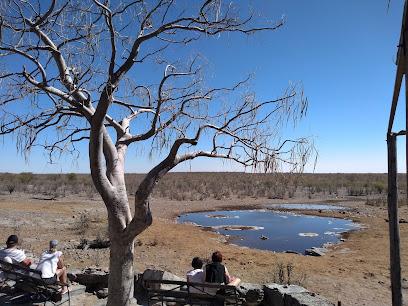
Choppies Supermarket Omuthiya
Experience local flavors at Choppies Supermarket in Omuthiya, where fresh produce meets international delights for every traveler.
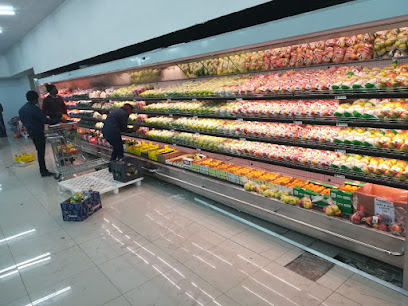
Onkoshi Resort
Discover the serene beauty of Onkoshi Resort, a tranquil lodge nestled near Etosha National Park, perfect for nature lovers and adventure seekers.

Anderson Gate Etosha National Park (Southern Entrance)
Experience the wonders of wildlife and breathtaking landscapes at Anderson Gate, the southern entrance to Etosha National Park.
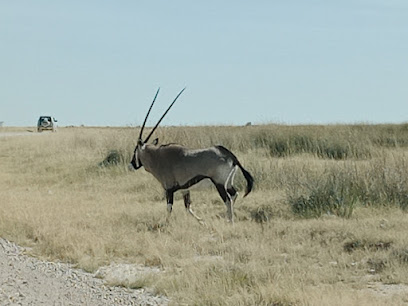
Omuthiya Open Market
Discover local flavors and vibrant culture at the Omuthiya Open Market, a hub of authentic Namibian life and community.
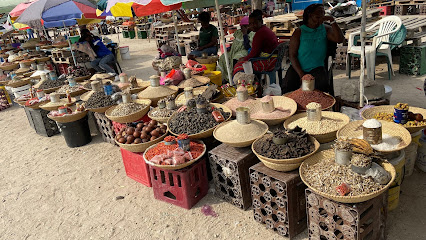
Etosha Trading Post Campsite
Discover the beauty and adventure of Namibia at the Etosha Trading Post Campsite, your gateway to unforgettable wildlife experiences.
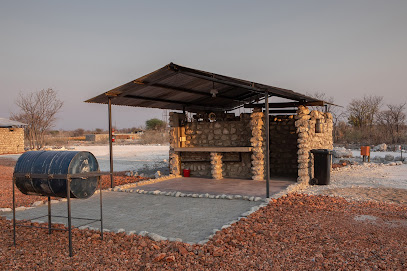
Essential bars & hidden hideouts
Halali Camp Restaurant
Discover the flavors of Namibia at Halali Camp Restaurant, nestled within the breathtaking Etosha National Park.
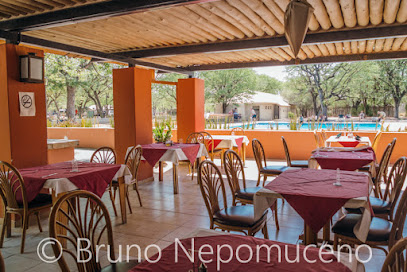
Tabito Bar
Experience the lively spirit of Omuthiya at Tabito Bar – where great drinks and local culture come together!
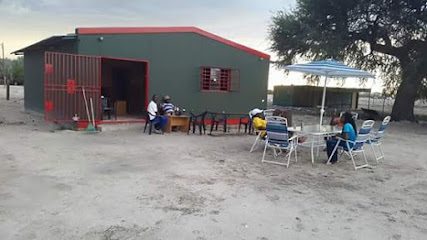
Matimkwetu Bar
Experience authentic Namibian cuisine at Matimkwetu Bar, where local flavors and vibrant culture come together in a lively atmosphere.

Spotman Bar
Experience the vibrant nightlife of Onashikookaya at Spotman Bar, where local flavors and energetic ambiance come together for an unforgettable evening.

P-Hauz Bar
Experience the vibrant nightlife at P-Hauz Bar in Omuthiya, where local culture meets a relaxed atmosphere for unforgettable moments.

Limerick Bar
Experience the vibrant flavors and lively ambiance at Limerick Bar in Omuthiya, where every meal is a celebration of local cooking.

Omusati Bar
Discover the lively Omusati Bar in Omuthiya, where local brews and vibrant atmosphere create unforgettable nightlife experiences.

Othithiya Park Bar
Experience the lively ambiance of Othithiya Park Bar in Omuthiya, where local flavors meet friendly faces in a vibrant atmosphere.
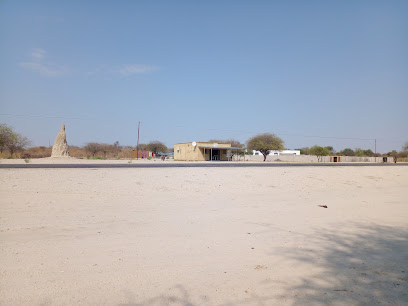
New World Bar
Discover the vibrant nightlife at New World Bar in Omuthiya, where local drinks and live music create an unforgettable experience.

INO Bar
Discover the vibrant atmosphere of INO Bar in Omuthiya, a perfect spot for drinks, local music, and mingling with fellow travelers.

Mtumba Bar
Discover the vibrant local culture at Mtumba Bar in Omuthiya, where refreshing drinks and friendly faces create a memorable experience.

Four way Bar
Experience the local charm at Four Way Bar, a vibrant hub in Omuthiya perfect for unwinding with friends and enjoying delightful drinks.

Fox pub
Experience the vibrant local culture at The Fox Pub in Amilema, where refreshing drinks and delicious cuisine await in a welcoming atmosphere.

Mboshono bar
Discover the vibrant nightlife and local culture at Mboshono Bar in Namibian Omuthiya, where every visit promises a lively atmosphere and unforgettable memories.

SETHO BEER HOUSE
Discover the vibrant atmosphere of Setho Beer House in Omuthiya, where great drinks and local culture blend seamlessly.
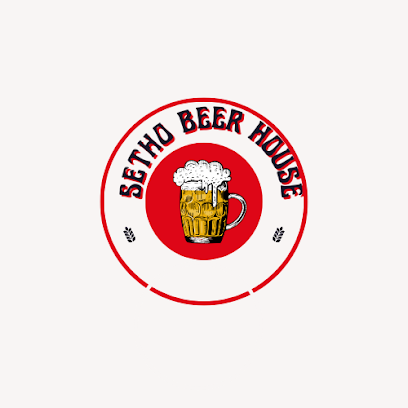
Local Phrases about Etosha National Park
-
- HelloMoro
[Maw-roh] - GoodbyeTashi kuka
[Tah-shee koo-kah] - YesEhe
[Eh-heh] - NoAwe
[Ah-way] - Please/You're welcomeKameme
[Kah-meh-meh] - Thank youOndonga
[On-dong-gah] - Excuse me/SorryEshike
[Eh-shee-kay] - How are you?Ondi lala?
[On-dee lah-lah] - Fine. And you?Ne nandi. Ondi lala?
[Neh nan-dee. On-dee lah-lah] - Do you speak English?Ondi shiingira onkala?
[On-dee shee-een-gee-rah on-kah-lah] - I don't understandAha sha onga
[Ah-hah shah on-gah]
- HelloMoro
-
- I'd like to see the menu, pleaseOndi lela oshilumbi, kameme
[On-dee leh-lah oh-shee-loo-mbee, kah-meh-meh] - I don't eat meatAha sha longa omahangu
[Ah-hah shah lohn-gah oh-mah-hahn-goo] - Cheers!Ombwala!
[Ohm-bwah-lah] - I would like to pay, pleaseOndi lala okundisa, kameme
[On-dee lah-lah oh-koon-dee-sah, kah-meh-meh]
- I'd like to see the menu, pleaseOndi lela oshilumbi, kameme
-
- Help!Eyo!
[Ay-yoh] - Go away!Shili!
[Shee-lee] - Call the Police!Tulula omuthingololwa!
[Too-loo-lah oh-moo-teen-goh-lohl-wah] - Call a doctor!Tulula omukolo!
[Too-loo-lah oh-moo-koh-loh] - I'm lostAha sha hala
[Ah-hah shah hah-lah] - I'm illAha sha limba
[Ah-hah shah leem-bah]
- Help!Eyo!
-
- I'd like to buy...Ondi lela oshidhwa...
[On-dee leh-lah oh-shee-dh-wah] - I'm just lookingAha sha longa naalimba
[Ah-hah shah lohn-gah nah-ah-leem-bah] - How much is it?Ongi nawa li?
[Ong-gee nah-wah lee] - That's too expensiveOndiya shi longa
[On-dee-yah shee lohn-gah] - Can you lower the price?Ondi mwa sha longa?
[On-dee mwah shah lohn-gah]
- I'd like to buy...Ondi lela oshidhwa...
-
- What time is it?Omwene wawa?
[Ohm-weh-nay wah-wah] - It's one o'clockOmwene wakula
[Ohm-weh-nay wah-koo-lah] - Half past (10)Omwene wakula nu tate
[Ohm-weh-nay wah-koo-lah noo tah-tay] - MorningOmanina
[Oh-mah-nee-nah] - AfternoonOmandi
[Oh-mahn-dee] - EveningOmateko
[Oh-mah-teh-koh] - YesterdayOndashi
[On-dah-shee] - TodayOmumwe
[Oh-moom-weh] - TomorrowOmusati
[Oh-moo-sah-tee] - 1Ongula
[Ong-goo-lah] - 2Ombili
[Ohm-bee-lee] - 3Ongatu
[Ong-gah-too] - 4Onganane
[Ong-gah-nah-neh] - 5Ongandjera
[Ong-gahn-jeh-rah] - 6Ongonyeti
[Ong-goh-nyeh-tee] - 7Onghulungwa
[Ong-ghoo-loong-wah] - 8Ongandjera na ombili
[Ong-gahn-jeh-rah nah ohm-bee-lee] - 9Ongandjera na gatu
[Ong-gahn-jeh-rah nah gah-too] - 10Ongandjera na gatanu
[Ong-gahn-jeh-rah nah gah-tah-noo]
- What time is it?Omwene wawa?
-
- Where's a/the...?Ondi longa...?
[On-dee lohn-gah] - What's the address?Ondi longa na oshilongwa?
[On-dee lohn-gah nah oh-shee-lohng-wah] - Can you show me (on the map)?Ondi mwa sha longa (pa ndilo)?
[On-dee mwah shah lohn-gah (pah n-dee-loh)] - When's the next (bus)?Uu ndi longa ondulukwa (ombwa)?
[Oo on-dee lohn-gah ohn-doo-loo-kwah (ohm-bwah)] - A ticket (to ....)Omutiketi (pa ....)
[Oh-moo-tee-kay-tee (pah)]
- Where's a/the...?Ondi longa...?
History of Etosha National Park
-
Etosha National Park, located in Namibia, was established in 1907 when the area was proclaimed as a game reserve by the German colonial administration. Originally covering an area of approximately 100,000 square kilometers, it was one of the largest game reserves in the world. The name 'Etosha' means 'Great White Place' in the Ovambo language, reflecting the vast salt pan that dominates the landscape.
-
The Etosha Pan is a vast, endorheic salt pan that covers about 4,800 square kilometers of the park's area. It was formed over 10 million years ago and is believed to have been a lake fed by the Kunene River, which later changed course. During the rainy season, the pan temporarily fills with water, attracting large flocks of flamingos and other bird species.
-
The area around Etosha has been home to various indigenous groups for centuries, including the San (Bushmen), Ovambo, and Herero people. These communities have a deep connection to the land and its wildlife, and their traditional knowledge and practices have significantly influenced the region's ecology and conservation efforts.
-
During the German colonial period in the early 20th century, Etosha was declared a game reserve to protect the region's wildlife from overhunting. The Germans built several forts and outposts, some of which still stand today and serve as historical landmarks. This period also saw the construction of infrastructure that laid the foundation for modern conservation and tourism in the park.
-
After World War I, Namibia came under South African administration. In 1958, the Etosha Game Reserve was declared a national park. During this period, the park's boundaries were significantly reduced to its current size of approximately 22,270 square kilometers. Despite these changes, Etosha continued to be a premier destination for wildlife conservation and tourism.
-
Etosha National Park has been at the forefront of various wildlife conservation efforts. Programs for the protection of endangered species, such as the black rhinoceros and the African elephant, have been particularly successful. The park's diverse ecosystems support a wide range of flora and fauna, making it a crucial area for biodiversity in Namibia.
-
Today, Etosha National Park is one of Namibia's most popular tourist destinations, attracting visitors from around the world. The park offers a unique safari experience, with well-maintained roads and waterholes that provide excellent wildlife viewing opportunities. The combination of its rich history, cultural significance, and natural beauty makes Etosha a must-visit location for any traveler.
Etosha National Park Essentials
-
Etosha National Park is located in northern Namibia. The nearest major airport is Hosea Kutako International Airport (WDH) in Windhoek, approximately 435 kilometers away. From Windhoek, you can rent a car and drive to the park, which typically takes around 5 to 6 hours. Alternatively, you can book a shuttle service or join an organized tour that includes transportation to and from the park. Some regional flights also operate to Ondangwa Airport, located closer to Etosha, and from there you can take a shorter drive of about 2 hours to reach the park.
-
Within Etosha National Park, self-drive is a popular option, and there are several car rental services available. The park's roads are well-maintained, but a 4x4 vehicle is recommended for more remote areas. Guided tours are also available and can be arranged through various lodges and tour operators. These tours often provide the added benefit of knowledgeable guides who can enhance your wildlife experience. Bicycles and motorbikes are not permitted within the park for safety reasons.
-
The official currency in Namibia is the Namibian Dollar (NAD), which is interchangeable with the South African Rand (ZAR). Credit cards are widely accepted in lodges, camps, and larger establishments within the park, but it is advisable to carry some cash for smaller transactions or in case of connectivity issues. ATMs are available in larger towns near the park, such as Outjo and Tsumeb, but it is wise to withdraw sufficient cash before entering the park.
-
Etosha National Park is generally safe for tourists, but it is important to take standard precautions. Wildlife can be dangerous; always stay inside your vehicle and keep a safe distance from animals. Avoid walking alone at night, even within campgrounds, due to the presence of wildlife. Petty crime can occur, so keep valuables secure and avoid leaving them in plain sight. There are no specific high-crime areas targeting tourists within the park, but it is always best to stay vigilant.
-
In case of an emergency, contact the park authorities or the nearest lodge reception for assistance. The emergency contact number for Namibia is 10111 for police and 10177 for medical emergencies. Medical facilities are available in larger towns such as Tsumeb and Outjo, but it is recommended to carry a basic first aid kit and any necessary medications. Travel insurance that covers medical emergencies and evacuation is highly recommended.
-
Fashion: Do dress in neutral-colored clothing to blend in with the environment and avoid bright colors that can attract insects or disturb wildlife. Don’t wear camouflage patterns, as they are reserved for military personnel. Religion: Do respect local customs and traditions. While there are no specific religious requirements within the park, it is always good practice to be respectful of cultural sensitivities. Public Transport: Do use official shuttle services or guided tours for transportation within the park. Don’t attempt to hitchhike or use unauthorized vehicles. Greetings: Do greet people with a friendly hello or a handshake. Namibians are generally warm and welcoming. Eating & Drinking: Do try local Namibian dishes offered at lodges and camps. Don’t waste food, and always dispose of waste properly to protect the environment.
-
To experience Etosha like a local, consider visiting during the dry season (June to September) when wildlife congregates around waterholes, making for excellent viewing opportunities. Early morning and late afternoon are the best times for wildlife sightings. Engage with park rangers and guides, as they can provide valuable insights and tips for spotting elusive animals. Don’t miss a night drive with guided tours, which offer a chance to see nocturnal animals. Bring binoculars and a good camera with a zoom lens to capture the incredible wildlife.
Trending Landmarks in Etosha National Park
-
Namib-Naukluft National Park
-
Etosha Safari Camp, Gondwana Collection Namibia
-
Okaukuejo Etosha
-
Okapuka Safari Lodge
-
Etosha Safari Lodge, Gondwana Collection Namibia
-
Etosha Village
-
Mokuti Etosha
-
Toshari Lodge
-
Okonjima Nature Reserve
-
Bwabwata-National Park
-
Mount Etjo Safari Lodge
-
Waterberg Plateau National Park
-
Otjiwa Safari Lodge
-
Halali Camp
-
Daan Viljoen Game Reserve
Nearby Cities to Etosha National Park
-
Things To Do in Ongwediva
-
Things To Do in Oshakati
-
Things To Do in Outjo
-
Things To Do in Tsumeb
-
Things To Do in Otjiwarongo
-
Things To Do in Omaruru
-
Things To Do in Karibib
-
Things To Do in Okahandja
-
Things To Do in Usakos
-
Things To Do in Rundu
-
Things To Do in Windhoek
-
Things To Do in Swakopmund
-
Things To Do in Walvis Bay
-
Things To Do in Mariental
-
Things To Do in Maun


